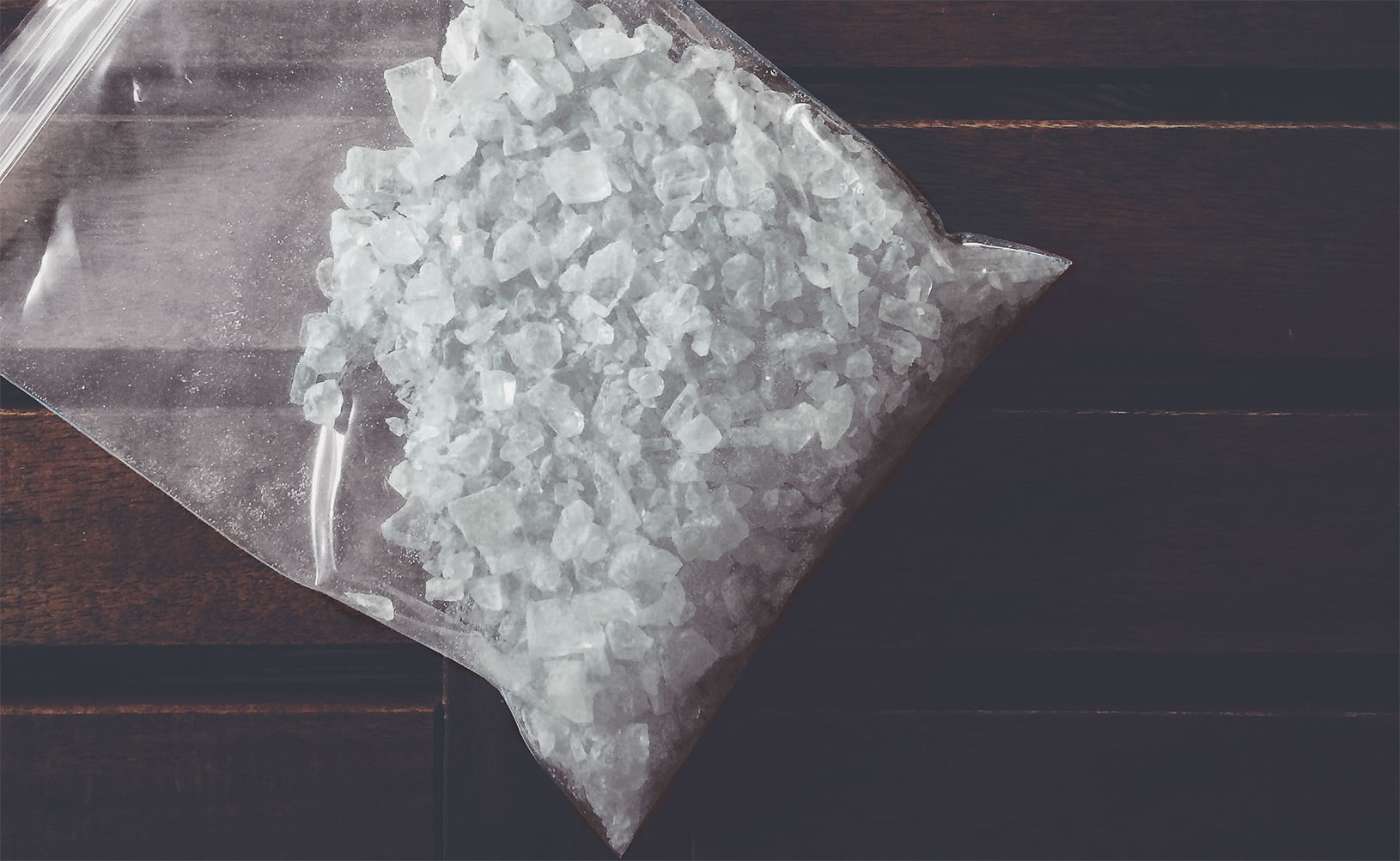KNOW THE FACTS
METHAMPHETAMINE (METH)

Also known as: Meth, Speed, Chalk, and Tina; or for crystal meth, Ice, Crank, Glass, Fire, and Go Fast
Methamphetamine—known as “meth”—is a very addictive stimulant drug. Stimulants are a class of drugs that can boost mood, increase feelings of well-being, increase energy, and make you more alert. But they also have dangerous effects like raising heart rate and blood pressure, and use can lead to addiction.
Methamphetamine is a man-made, white, bitter-tasting powder. Sometimes it's made into a white pill or a shiny, white or clear rock called a crystal. Meth is made in the United States and often in Mexico—in "superlabs"—big illegal laboratories that make the drug in large quantities. But it is also made in small labs using cheap, over-the-counter ingredients such as pseudoephedrine, which is common in cold medicines. Other chemicals, some of them toxic, are also involved in making methamphetamine.
Methamphetamine is classified as a Schedule II drug, meaning it has high potential for abuse and is available only through a prescription that cannot be refilled. It is prescribed by doctors in limited doses in rare cases for certain medical conditions.
Methamphetamine is swallowed, snorted, injected with a needle, or smoked. “Crystal meth” is a large, usually clear crystal that is smoked in a glass pipe. Smoking or injecting the drug delivers it very quickly to the brain, where it produces an immediate and intense high. Because the feeling doesn’t last long, users often take the drug repeatedly, in a “binge and crash” pattern.
Methamphetamine causes a quick release of the neurotransmitter dopamine in the brain, producing feelings of extreme pleasure, sometimes referred to as a “rush” or “flash.” It is important to note that when you do fun drug-free things like listen to music, play video games, or eat tasty food, the brain naturally releases small amounts of dopamine, making you feel pleasure. But meth floods the brain with dopamine, depleting its supply. So, once the effects have worn off, the brain will no longer send the small amounts of this pleasure producing chemical to the brain when you do ordinary activities, and that can lead to depression.
Regular use of methamphetamine causes chemical and molecular changes in the brain, sometimes for a long time. The activity of the dopamine system changes, causing problems with feeling pleasure, movement, and thinking.
The release of dopamine in the brain causes several physical effects, similar to those of other stimulants like cocaine. These include:
- feeling very awake and active
- fast heart rate and irregular heartbeat
- higher blood pressure
- higher body temperature
- increased risk for HIV/AIDS or hepatitis (a liver disease) from unsafe sex and shared needles
Long Term Effects
Continued methamphetamine use may cause effects that last for a long time, even after a person quits using the drug. These effects include:
- anxiety and confusion
- problems sleeping
- mood swings
- violent behavior
- psychosis (hearing, seeing, or feeling things that are not there)
- skin sores caused by scratching
- severe weight loss
- severe dental problems, known as “meth mouth”
- problems with thinking, emotion, and memory
Tips for Teens: The Truth About Methamphetamine
Substance Abuse and Mental Health Services Administration (SAMHSA)

